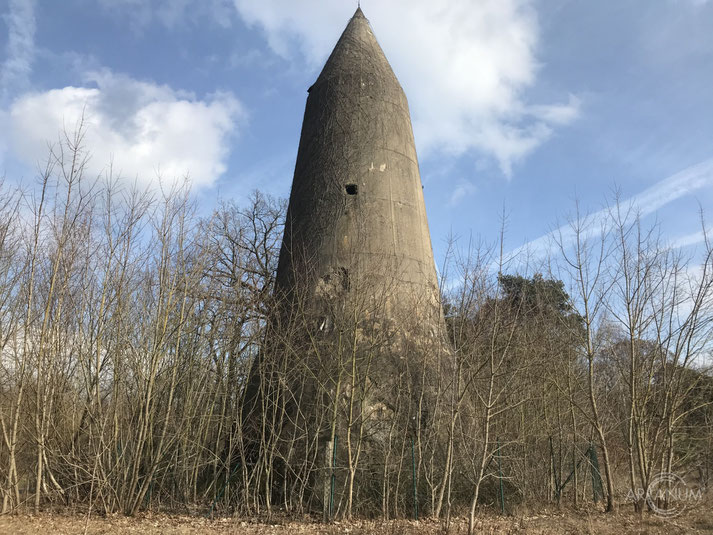The "Winkel" Bunker
At the beginning of the 1930s, a German architect was concerned with the possibility of constructing an above-ground air defense tower in such a way that its shape alone would guarantee bomb safety.
Leo Winkel was inspired by churches of Italian design, in which the bell tower stands freely next to the actual church building (so-called "campanile").
So a free-standing tower was created on the drawing table, under consideration of the shape of the greatest possible protection against bombs.

With these ideas, Leo Winkel broke new ground in the construction of shelters, since at that time bunker systems were almost exclusively built underground. In the construction of underground shelters, however, there were repeated unplanned delays due to difficult groundwater levels or soil conditions.
This often drove the planned costs extremely high. The great advantages of an above-ground bunker structure consisted essentially of the precisely calculated costs and the time required for the construction phase. Another positive physical effect in high bunker systems was the damming effect of detonations.
Due to the kinetic energy of a falling bomb, it often buried itself deep in the earth. The following explosion is dammed up with earth. The pressure of such an explosion could not develop freely, so significantly greater forces act on the structure of underground shelters.
In the case of high bunkers, the same protective effect could be achieved despite thinner walls, since the pressure wave of an explosion could freely expand in all directions above ground.
On September 18, 1934, the design idea was submitted to the German Reich's Patent Office as a patent application. The patent was granted on April 9, 1938.
The angled towers, which, depending on their design, offered space for up to 600 people, were developed by the company (Winkel & Co. Duisburg) and built by twelve leading German construction companies after licensing.
The pointed, steeply sloping roof should provide a small area for bombs to attack and, in the event of a hit, ensure that the bomb would slide off without it exploding. Only one documented bomb hit is known that destroyed a tower.
Around 200 "Winkel"-Towers were built during the Third Reich.
Today, as far as they are preserved, most of them are under monument protection.
The "Winkel"-Towers shown in the photos are located in Wünsdorf, a small town in the German state of Brandenburg, which during World War II was home to a lot of military personnel, among others the High Command of the Wehrmacht.
In Wünsdorf, 19 of the "Winkel"-Towers were built.










































